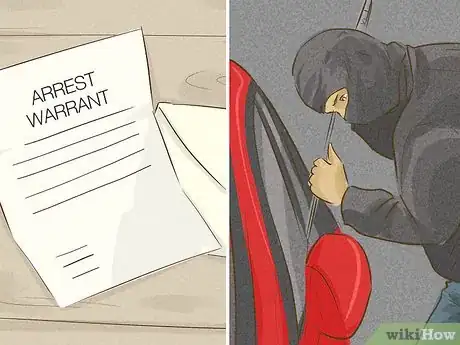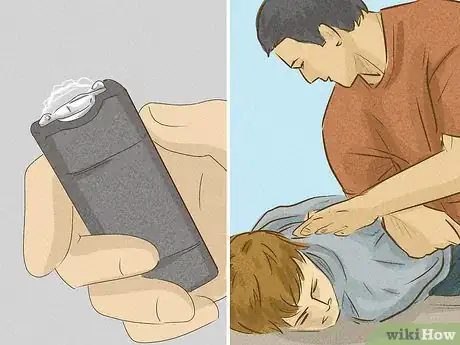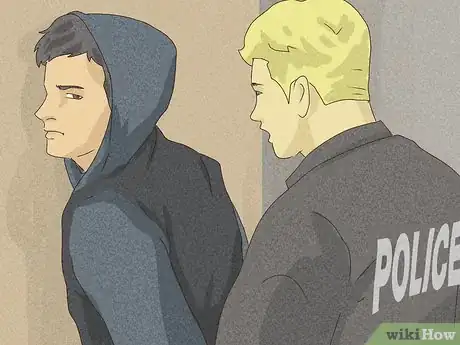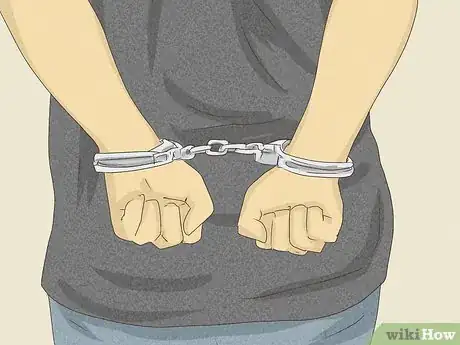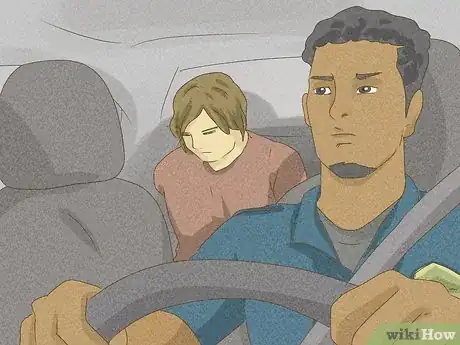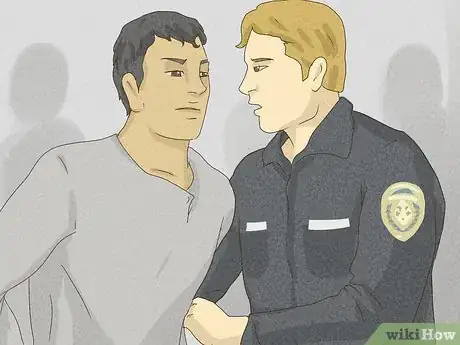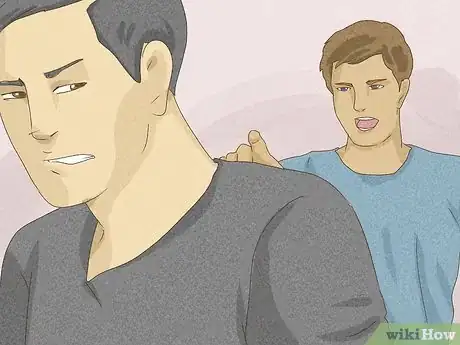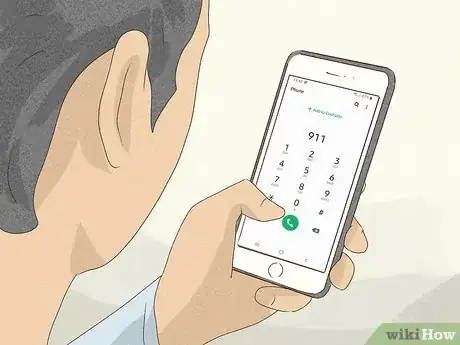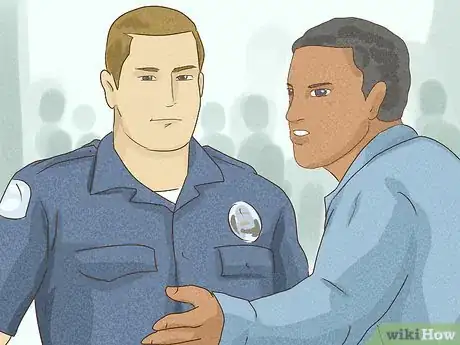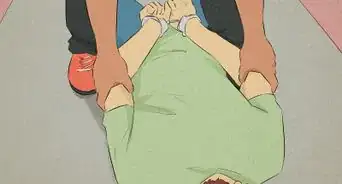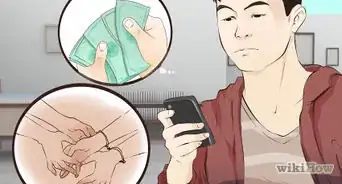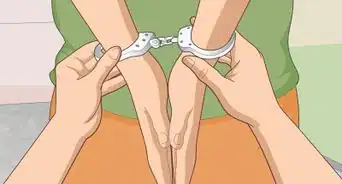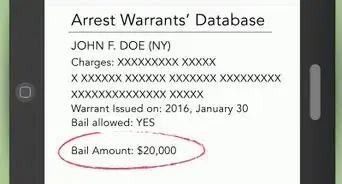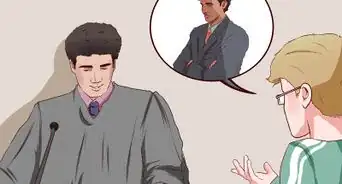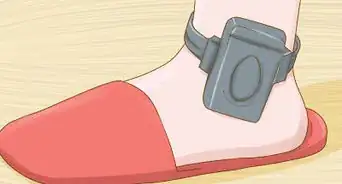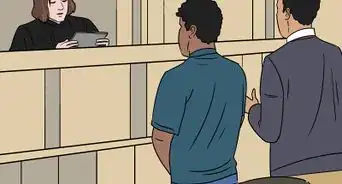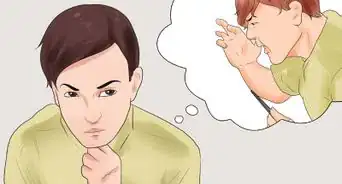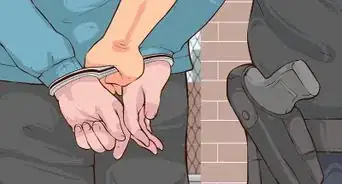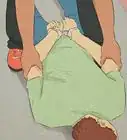This article was co-authored by wikiHow Staff. Our trained team of editors and researchers validate articles for accuracy and comprehensiveness. wikiHow's Content Management Team carefully monitors the work from our editorial staff to ensure that each article is backed by trusted research and meets our high quality standards.
There are 11 references cited in this article, which can be found at the bottom of the page.
This article has been viewed 67,319 times.
Learn more...
Arresting someone is complicated. You must have a legal reason to make the arrest, and you must follow certain procedures when making the arrest. Police officers should be given a detailed policy explaining the amount of force that is appropriate depending on the circumstances. If police use too much force, then can be sued. Although citizens can make arrests in many countries, they should carefully analyze the situation. Often, it makes better sense to simply call the police.
Steps
Arresting a Suspect as a Police Officer
-
1Confirm you have reason to arrest. Legally, you can only make an arrest in a limited number of circumstances. For example, you can arrest someone in the following situations:[1]
- You have an arrest warrant signed by a judge.
- You observed a crime being committed.
- You have probable cause to believe the suspect has committed a crime. To find probable cause, you must have specific facts and not a hunch that the person has committed a crime.[2]
-
2Immobilize the suspect. To make the arrest easier, you need to stop the suspect’s movements. You can use many different methods, such as verbal commands or Tasers. Your police force should have a “use of force” policy that lays out what force you can use and when. Know this policy by heart. If you don’t follow it, you can be sued for excessive use of force.
- Typically, the manual will explain a continuum of force. For example, you can start by issuing a verbal command: “Let me see your ID” or “Stop.” If the suspect doesn’t comply, you can use empty hand controls such as grabs or holds. The officer can increase the force up the continuum until the suspect complies.[3]
- The final point on the continuum is deadly force. Your manual will explain the situations in which deadly force is appropriate.
- Use of force is so important you should receive training on it before being allowed into the field. Ask a supervisor if you have questions.
Advertisement -
3Gain control of the suspect. Once you immobilize the suspect, you need to control them. If you don’t, then you can injure yourself as you try to get the cuffs on. If necessary, you may need to move up the use of force continuum until you get sufficient control.
- Be alert for the suspect to attempt to break free at any point before they are handcuffed.
-
4Handcuff the suspect. You should handcuff someone behind their back. If you handcuff in the front, they have too much freedom to move and may reach for a weapon or hurt you. Always cuff in back.
- Always place the backs of the hands together. This prevents suspects from sliding their hands down to the feet.
- After cuffing, make sure the handcuffs aren’t too tight. Also confirm they are secure.[4]
-
5Search the suspect. After cuffing the suspect, you should search them. Search for a weapon or other evidence of a crime. You can never be too careful. Search everyone, regardless of their gender, age, size, or race. Even very young and very old suspects have killed police officers.
- You might not be able to conduct your search immediately after arrest. For example, weather conditions might prevent a safe search. Also, you might have arrested someone with a mob of people around you. Move the suspect to a secure location before searching.
- Check the waist and groin areas first. A weapon is most likely stored there.
- Also be sure to conduct a second, more thorough search. If necessary, ask another officer to search the suspect as well.
-
6Transport the suspect. Remain vigilant during the transport. You might relax, thinking everything is under control because the cuffed suspect is in the backseat. However, the suspect’s anxiety will increase the closer you get to your destination. Accordingly, you should be prepared for erratic or irrational behavior when you near the end of the transport.
- Remember to search the subject each time you transfer them to another officer or drop them off at a location. You might have overlooked a weapon, or the suspect could have obtained one during transport.
-
7Give Miranda warnings if you want to ask questions. Once a suspect is in custody, you can’t interrogate them without giving Miranda warnings. If you don't give the warnings, then the prosecutor can't use the suspect's statements in court. There are four warnings:[5]
- The suspect has the right to remain silent.
- Any statement the suspect makes can and will be used against them in court.
- They have the right to an attorney.
- If the suspect can’t afford an attorney, one will be provided to them.
Making a Citizen’s Arrest
-
1Identify if you have reason to make an arrest. In some countries, private citizens can make arrests even if they are not sworn police officers. However, you can only make arrests in certain limited situations, which vary by location:[6]
- You suspect the person has committed a felony, such as murder, rape, burglary, etc. However, your suspicion must be reasonable. Furthermore, the felony must actually have been committed. If it didn’t, you can be legally liable for the arrest.
- In Canada, and in some U.S. states, you must have actually observed the violent crime being committed before you can make a citizen’s arrest.[7]
- Someone is breaching the peace. In many U.S. states, you can make a citizen’s arrest if you personally witnessed someone breaching the peace. For example, someone breaches the peace by fighting or making a loud disturbance.[8]
- You suspect the person has committed a felony, such as murder, rape, burglary, etc. However, your suspicion must be reasonable. Furthermore, the felony must actually have been committed. If it didn’t, you can be legally liable for the arrest.
-
2Consider the risks. You shouldn’t attempt a citizen’s arrest without consider the risks and consequences. For example, quickly analyze the following:[9]
- Does the suspect have a gun, knife, or other weapon? You don’t want to jeopardize your own safety or the safety of those around you by attempting an arrest.
- Is there a police officer nearby, or can you quickly call one? It is better to involve trained police. If possible, you can focus on getting a detailed, accurate description of the suspect instead of attempting an arrest.
- Can you quickly turn over the suspect to the police? If not, then don’t make an arrest.
- Do you know whether the suspect committed a felony? What qualifies as a felony differs depending on the state or country. If you're unsure, simply report the suspicious conduct to the police.
-
3State you are making a citizen’s arrest. You’ll need to give an explicit warning that you are arresting the person.[10] Shout, “Stop! I’m making a citizen’s arrest!” This will give the suspect a chance to turn themselves over.
- Also give the suspect a reason why you are arresting them. For example, "You're breaching the peace by fighting" is a sufficient reason.
-
4Use reasonable force to subdue the person. You cannot use excessive force in order to make an arrest. Instead, use only the amount of force necessary to subdue the suspect. For example, if the person struggles only briefly, you can’t give him a left hook that knocks him out cold.
- A suspect might be desperate to avoid arrest. If so, they could put up quite a fight. Always remember to protect your own safety.
- If the arrest turns into a brawl, you should let the suspect go.
-
5Call the police. As soon as possible, either call the police or ask another bystander to call the police. Don’t delay, since the arrested might become agitated.
- Ask the suspect to cooperate.[11] Say, “Will you calm down? The police are coming. You don’t want to make any more trouble.”
-
6Avoid questioning or searching the suspect. In the United States, a citizen’s arrest is not subject to the same Constitutional requirements as a police officer’s arrest. Accordingly, you aren’t prohibited from asking questions or searching the suspect. However, you probably should avoid doing so. Leave it to the police when they arrive.
- If you make an arrest at the request of the police, then your arrest is subject to the Constitution’s restraints.[12]
- However, suspects can blurt out incriminating information. For example, a suspect might shout, “I didn’t know the gun was loaded!” Don’t follow up with questions, but you can give the police this information.
-
7Tell the officer what happened. When the police arrive, give the facts of the incident. Be as accurate as possible and answer any questions about why you suspected the person of committing a crime. Also discuss what you did and said to arrest the person.
Community Q&A
-
QuestionCan I make a citizen's arrest if I am 11 years old?
 Community AnswerA citizen of any age may arrest another. You should keep in mind that a private arrest should only occur when there is no other option and you are fully aware of the risks and liabilities.
Community AnswerA citizen of any age may arrest another. You should keep in mind that a private arrest should only occur when there is no other option and you are fully aware of the risks and liabilities. -
QuestionHow do I know if a suspect is surrendering?
 Community AnswerThey may say verbally that they are surrendering, or they may get on the ground. Another way they may show they are surrendering is if they get on their knees and raise their hands opened or put their palms behind their head while kneeling. Normally if a suspect kneels or gets on the ground, they will say verbally that they are surrendering. Some also stand with their hands raised or hands behind their head.
Community AnswerThey may say verbally that they are surrendering, or they may get on the ground. Another way they may show they are surrendering is if they get on their knees and raise their hands opened or put their palms behind their head while kneeling. Normally if a suspect kneels or gets on the ground, they will say verbally that they are surrendering. Some also stand with their hands raised or hands behind their head. -
QuestionCan I make a citizens arrest of an adult male for having sexual relations with my daughter?
 Community AnswerYes, assuming she is below the age of consent and you catch them in the act. Otherwise, you should report your concerns to DCS and the police.
Community AnswerYes, assuming she is below the age of consent and you catch them in the act. Otherwise, you should report your concerns to DCS and the police.
References
- ↑ http://criminal.findlaw.com/criminal-procedure/what-procedures-must-the-police-follow-while-making-an-arrest.html
- ↑ http://criminal.findlaw.com/criminal-rights/probable-cause.html
- ↑ https://nij.gov/topics/law-enforcement/officer-safety/use-of-force/Pages/continuum.aspx
- ↑ http://www.tactical-life.com/tactics/lifesaving-handcuffing-tactics/#handcuffing-gwle-dec-2014-arrest
- ↑ http://criminal.findlaw.com/criminal-rights/miranda-rights-and-the-fifth-amendment.html
- ↑ http://criminal.findlaw.com/criminal-procedure/citizen-s-arrest.html
- ↑ http://www.justice.gc.ca/eng/rp-pr/other-autre/wyntk.html
- ↑ http://criminal.findlaw.com/criminal-charges/disturbing-the-peace.html
- ↑ http://www.justice.gc.ca/eng/rp-pr/other-autre/wyntk.html
About This Article
Police officers have strict rules about when and how they can arrest someone. If you're a police officer, you need to have witnessed a crime or have probable cause that it was committed to arrest someone. Tell them that they’re under arrest, and use reasonable force if they resist. Once you've immobilized them, handcuff them, search them for any weapons or illegal items, and transport them to the local police station. You need to read them their rights before you can ask them any questions that can be used against them in court. Citizen’s arrest laws vary between countries and states but generally, if you're not a police officer, you can legally restrain someone who's committed a crime until the police arrive. Make sure you only do this if you’re not putting yourself in danger and don’t use excessive force. For more advice, including what to do if someone fights against a citizen’s arrest, read on.
